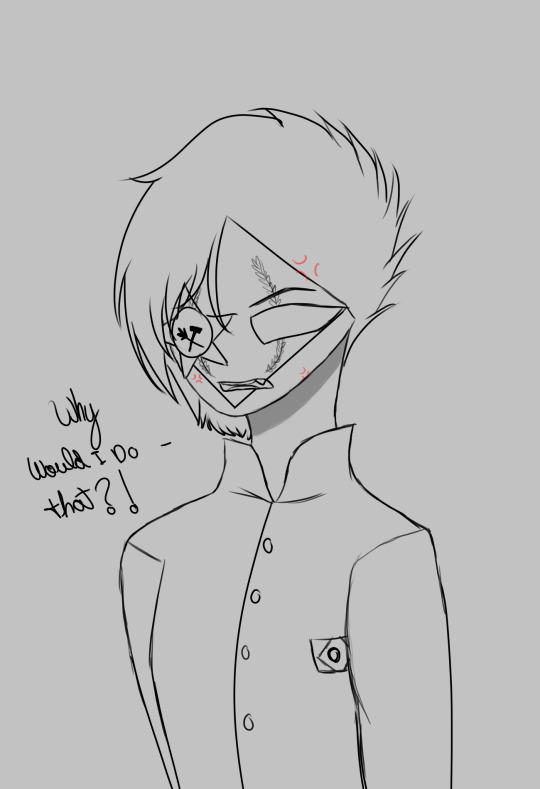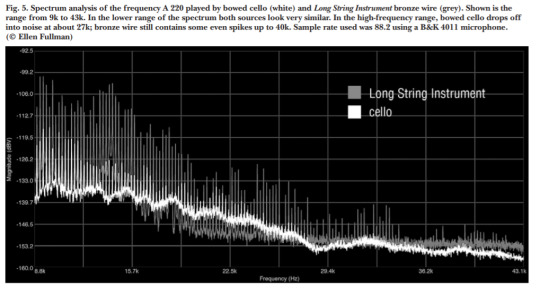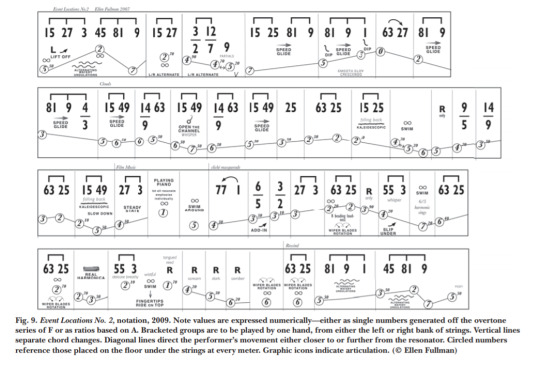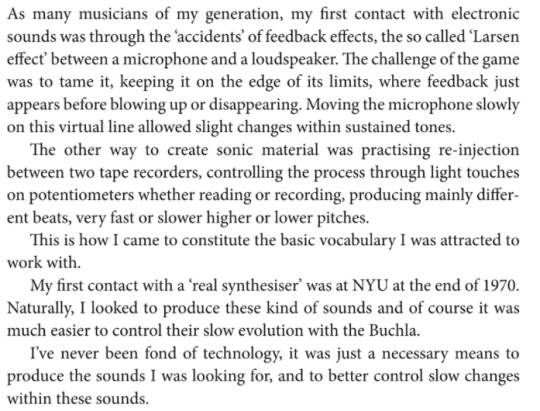#usrally
Explore tagged Tumblr posts
Video
#tbt throwback Thursday to last weekend at the @nasarallysport California Rally Series High Desert Trails Rally 2017. Driver: Dave Forman @forman_performance Co-Driver: William Furlong #usrally #nasarallysport #californiarallyseries #highdeserttrailsrally #hdt17 #rally #subaru #impreza #wrx #sti #hawkeye #motorsports #gopro #racing (at Jawbone Canyon)
#wrx#highdeserttrailsrally#tbt#nasarallysport#hdt17#subaru#motorsports#gopro#rally#hawkeye#californiarallyseries#racing#usrally#impreza#sti
2 notes
·
View notes
Note
B.C. thinks about make USRAL or nah?

:/ I think you make him angry.
20 notes
·
View notes
Video
youtube
Eliane Radigue
Usral
7 notes
·
View notes
Text
Dosao sam u 3 lepe picke materine, probijam granice svog ludila i svoje genijalnosti. Mozda sam zalutao, ne znam put do sobe, ali mi je lepo u praznom baru, ima pica. Macka je odvela misa ili pacova negde, ne znam razliku izmedju ta dva, pacov je valjda veci, ali sta ako je odnela pacova bebu? Ili malo veceg misa? Naslikao sam sliku i ne prestajem da mislim na nju, trcao bih da je vidim ali ne znam put. Sta ako joj pobegne mis?
Macka nece mirno spavati jer je prati mala macka, verovatno njena cerka ili sin, ako mis pobegne macka ce morati da ide u lov, ocekivace da naidje na novog misa ali ocekivanje je bajka o masti. Skoro nedostizno, osim ako ne ocekujes da ces se vratiti kuci, a mozda ni tad.
Poslednji put kad sam se probudio, secam se, bilo je to u razlomljenoj sobi, bez mirisa. Sa masnicom ispod oka. Da li je ista soba u kojoj sam spavao juce moj dom? Mozda mi treba novi dom?
Zabole me, spavacu na klupi, ukrasicu je svim nepostojacim bojama, ugradicu joj tockice, sto da ne? Svet je svakako otisao u kurac, na Tajlandu jedu obojena govna. Bicu novinar! Naslov ce glasiti SVET JE OTISAO U KURAC! Sve pare koje dobijem cu spaliti isred doma za nezbrinutu decu. Sto da ne? Blizi nam se kraj.
Macka je otisla negde, sa pacovom ili misem. Ali nema maceta.
Poslednji gosti su otisli iz bara, pred zoru. Ostavio sam konobaru baksis odokativno, delovao veoma zahvalno. Imao je izduzenu facu na kojoj su se ocrtavali podocnjaci, izgledao je kao covek kog izjeda sistem. "How are you" i "Where are you from" mi nisu punili usi. Nisam ga cenio kao coveka ali kao barmen me je ispostovao trpeci moja sranja.
Za mackom sa pacovom u ustima su isla dva mala maceta, ja sam i dalje praznio flase.
Osecao sam se nebitno, kao alkos, ali u svom svetu sam bio vise od toga.
Vodio me je taj osecaj pijanstva pomesan sa intuiciom koja me je vodila kroz zivot. Dakle, nisam koracao sam. Iako sam bio sasvim potisten i sam u mraku. Kao mis u zubima macke, slomio me je zivot.
Nisam ni jebao dugo, svaka cura sa kojom sam pricao bila je cudljiva zbog mog nacina pristupanju stvarima. Nisam znao da se formalno izrazim.
Ne mogu da osetim strast ako sve ide formalnim tokom, formalno moram da te strpam u krvet! govorio sam.
Upoznavao sam i rospije kao sto sam ja. One su bile spremne na sve sto ja nisam i kao da su samo mene cekale. Za mene je seks bio oduvek samo praznjenje muda. Sa vodjenjem ljubavi sam se vec zajebo.
Mrzeo sam da kijam "otvoreno" zato sam se svaki put drzao za nos da ne bi sline usrale sve oko mene. Kijao sam samo kad sam previse pijan. Cesto.
Samo me je ona drzala te neke normalnosti ili sama pomisao na nju. Ali ona je isuvise daleko od mene, kad bi umrli ili neko od nas, saznali bi za tri dana. Jer daleko smo mi. A ona je jedino sto sam ikad imao, a ona je oduvek bila svoja.
A ciji sam ja bio? Nikad nisam bio svoj. Nisam ni zeleo to da budem, jer sam ja-ja. Mozda je mislila da me nema, ali sam za nju u vecini slucajeva bio tu.
Nisam vise video macku, ni macice, samo misa. Pojeo mis macku!
1 note
·
View note
Photo

kak ya mnogo vremeni na eto usral pizdos. . . . #art #artofinstagram #artofportrait #portrait #fanart #BTS #btsart #btsfanart #btskimtaehyung #kimtaehyung #taehyung #taehyungfanart #btsv #digitalpainting (at BTS V Kim Taehyung) https://www.instagram.com/p/B0-4NJtABgN/?igshid=1hkvv184gwdl1
#art#artofinstagram#artofportrait#portrait#fanart#bts#btsart#btsfanart#btskimtaehyung#kimtaehyung#taehyung#taehyungfanart#btsv#digitalpainting
0 notes
Text
L'histoire d'Eliane Radigue, 86 ans, pionnière française de l'électro
Les 28 et 29 juillet prochains, Eliane Radigue présentera, par l'intermédiaire du compositeur et musicien Cat Hope, sa 24e composition justement titré OCCAM XXIV lors du festival australien Open Frame. Un oeuvre qui fait suite à Occam Ocean Vol.1 (2017), énième album de cette stakhanoviste de la musique. Une histoire débutée dans les années 50 aux côtés de musiciens de l’avant-garde. Née en 1932 à Paris, elle fuit une mère autoritaire à l’âge de 19 ans pour s'installer à Nice où elle rencontre son futur mari, le peintre Arman. En compagnie d’amis artistes le couple fonde L’Ecole de Nice, mais la jeune femme, musicienne classique à ses heures perdues, se découvre une curiosité musicale par un biais inhabituel : l’aéroport de Nice.
Atterrissages et décollages constants
Sensible aux sonorités des atterrissages et décollages des différents modèles d’avions, Eliane Radigue ne sait pas encore qu'elle vient de faire un premier pas vers la musique concrète. Plus tard, elle comprendra ces curiosités sonores par l’intermédiaire d’une émission radio de Pierre Schaeffer, théoricien de la musique concrète et électroacoustique. L'épiphanie provoquée par l'émission est telle qu’à partir de 1955, Eliane Radigue multipliera les allers retours à Paris pour assister aux ateliers du Club d’essai de la RTF. Un club emmené par Pierre Schaeffer lui-même et Pierre Henry, l'un des pères de la musique électroacoustique.
Pierre²
De ces rencontres avec Pierre Schaeffer et Pierre Henry, Eliane obtiendra un stage qui durera 3 ans. Dans l'ombre, Eliane Radigue apprend, pratique, coupe et recolle des kilomètres de bandes magnétiques servant à leurs œuvres. Mais loin de la copie carbone, la jeune femme développe en songe une musique s’affranchissant des contraintes théoriques de ses deux patrons: ils organisent, structurent et hiérarchisent la matière sonore pour la transformer en musique, mais Eliane, elle, entrevoit déjà un motif structurel de sa musique future. Le son, malgré son chaos apparent, peut être de la musique en soi pour peu qu’on veuille l’entendre.
En 1958, une guerre d'ego éclate entre les deux Pierre: Schaeffer multiplie les activités et délègue de plus en plus à Henry, en mal de reconnaissance, qui réalise la majorité des travaux du duo sans en tirer parti. Eliane Radigue prend la défense de Pierre Henry et le suit dans la création de l’Apsome (Applications de procédés sonores en musique électroacoustique), le premier studio du genre à Paris en 1964. Dans son rôle d’assistante, elle croule sous les demandes d’Henry qui la monopolise jusqu’à 15h pour jour, jusqu’à l’épuisement.
New York, New York
Par deux fois Eliane Radigue se rendra à New York, deux voyages fondamentaux dans sa carrière. En 1963, lorsqu’elle débarque pour la première fois en compagnie de son mari, elle rencontre quelques éminents musiciens : James Tenney, Philip Glass, Philip Corner ou Steve Reich. De John Cage à la Factory d'Andy Warhol, la ville bat au rythme de la musique d'avant-garde. Une émulation salvatrice pour Eliane d'autant que pour la première fois, ses pairs témoignent un profond respect pour sa musique, ce qui donnera un second souffle à sa carrière lors de son retour à Paris.
Lors d’un second voyage en 1970, elle fait une rencontre qui aiguillera le reste de sa carrière et dont naîtra une idylle : les synthétiseurs, notamment le Buchla et l’ARP 2500 qui ne la quittera plus jusqu’au XXIe siècle. Un instrument qu’exècre Pierre Henry avec qui elle a mis fin à son éprouvante collaboration quelques années plus tôt. Avant cette séparation elle est néanmoins auteure de quelques pièces majeures de sa discographie: Vice Versa, etc (1970), Usral (1969), Stress Osaka (1970), Omnht (1970). Des compositions résultant des enseignements acousmatiques des deux Pierre et de ses propres visions. Comme le précise Trax, Eliane Radigue ne se conformera jamais à une école. En résulte, une période forte d’expérimentations entre sons naturalistes issus de sa banque de sons de Nice et effets Larsen -une illustration même du son "sauvage" qui selon Red Bull Music Academy lui tient particulièrement à cœur. Grâce au ARP 2500 -mais en se séparant du clavier qui accompagne la machine pour éviter la facilité, elle sera en mesure de dompter ces sons si difficiles à maîtriser à son retour de New York.
Rencontre avec le bouddhisme
Désormais grande prêtresse des modulations, résonances, palpitations et autres sons de l’infime, Eliane Radigue découvre le bouddhisme comme une évidence. Sans le savoir, les cycles de vie, de mort et de renaissance, qui traverse sa musique depuis ses débuts chez Pierre Schaeffer et Pierre Henry, sont au cœur de la religion bouddhiste. Elle décide alors d'embrasser ces préceptes religieux et des les appliquer à sa musique pour le reste de sa carrière.
Ainsi le bouddhisme occupe une place prépondérante dans les compositions d’Eliane : La trilogie Adnos (1974,1980,1982), Les Chants de Milarepa (1983), La Trilogie de la Mort (1988,1991,1993), L’Île Re-Sonante (2000) tous inspirés par cette discipline rigoureuse. Enfin en 2006, sur un conseil du violoncelliste Charles Curtis, elle délaisse son ARP 2500 –son "Jules" comme elle dit- pour revenir aux instruments acoustiques. Elle poursuit depuis son humble quête de perfection avec une rigueur ascétique et une vitalité à toute épreuve, continuant l’invention de son propre langage.
from Les Inrocks - musique https://ift.tt/2IYfleT via IFTTT
0 notes
Text
Elaine Radigue - Feedback Works 1969-1970
youtube
The very first feature on this blog was indeed Élaine Radigue with her timeless composition Kyema. It is therefor fitting to end the year of 2017 with a somewhat more avant-garde project of hers: Feedback Works 1969-1970.
The album consists of 5 tracks (total length: 1 hours and 11 minutes) composed using different methods of creating feedback loops with the help of tape machines, mixers and Élaine Radigue's trusty ARP 2500:
Stress-Osaka (June 1969) - 00:00
Usral (April 1969) - 11:24
Omnht (1970) - 24:43
Vice - Versa, Etc (1970) Mix I - 43:53
Vice - Versa, Etc (1970) Mix II - 55:50
It is a difficult listen in so far as it almost completely lack any melody or traditional tones. Rather it is rich of harmonics, sometimes pleasantly so and sometimes unpleasant. It is unruly and full of tension.
But something happens when you let yourself be guided by the music (yes, it is music!). Instead of pushing and shoving you in all kinds of directions, constantly begging for your attention, it whispers in quiet tones that resonates with your nostalgia.
In conclusion: Although difficult at first, Feedback Works 1969-1970 is a great collection of unruly drone music to serve as an introduction to the less melodic or atonal side of the genre.
Finally I wish you all a happy new year!
0 notes
Video
California Rally Series #3 rallyx championship points race is on Sunday the day after the @nasarallysport High Desert Trails rally. Come out race, crew, or volunteer at the stage rally and rallycross! It's going be a fun filled weekend of everyone getting their #wheelsdirty. Video of my last run at the February CRS rally school rallyx. #rallykings #allwheeldestruction #subaru #impreza #wrx #battlewagon #rallyx #rallycross #usrally #californiarallyseries #nasarallysport #hdt17 #highdeserttrailsrally #usrally #scca #calclub (at Desert Empire Fairgrounds & Events Center)
#allwheeldestruction#3#impreza#battlewagon#rallycross#californiarallyseries#usrally#hdt17#highdeserttrailsrally#wheelsdirty#scca#calclub#subaru#nasarallysport#wrx#rallykings#rallyx
1 note
·
View note
Text
Listening #3: learning to play nested environments (technical and natural)
James Tenney - Analog #1 (Noise Study) (1961, Bell Laboratories)
vimeo
I learned to hear these sounds more acutely, to follow the evolution of single elements within the total sonorous “mass,” to feel, kinesthetically, the characteristic rhythmic articulations of the various elements in combination,etc. Then I began to try to analyze the sounds, aurally, to estimate what their physical properties might be drawing upon what I already knew of acoustics and the correlation of the physical and the subjective attributes of sound.
Tenney (born 1934) is widely considered as the first composer to make a piece of purely digital music, Analog #1. Zavagna et al. deconstruct the piece along multiple axes in their 2015 paper, but the point of interest here is the parallel development of Tenney’s understanding for his living environment (specifically, the trip between his Manhattan home and Bell Labs in Murray Hill, via the Holland Tunnel) and his work environment, the MUSIC-III system as assembled by Mike Matthews.
In the quote above, Tenney describes his learning to enjoy and productively experience the sounds of the Holland Tunnel, which links New Jersey and New York by going under the Hudson. The experience will seem familiar to those acquainted with the early works and philosophies of Pauline Oliveros and John Cage: attentive (deep?) listening allows for a new, productive perspective on traditionally unpleasant sounds.
Tenney had no necessity to find beauty in the resonating white noise of his daily commute, yet this gentle self-discipline parallels his effort of learning still-developing MUSIC-III. In this iteration of the software, Matthews introduced the concept of unit generator, or u-gen. These u-gens enable Tenney to implement an instrument, which he would re-use in later pieces and describe in his 1963 article Sound Generation by means of a Digital Computer:

Unfortunately Noise Study used custom u-gens for which the code has been lost (Zavagna, 2015), but this diagram show the basic signal flow for each of the 5 digital instruments (Music-III works based on an orchestra/score separation, and Tenney used 5 copies of this instrument for Noise Study). Oscillators are mixed, some via a Random u-gen, and then processed further. Tenney adds:
For center frequency, the toss of a coin was used to determine whether the initial and final values for a given note were to be the same or different (i. e., whether the pitch of the note was constant or varying). In order to realize the means and ranges in each parameter as sketched in the formal outline, a rather tedious process of scaling and normalizing was required that followed their changes in time.
The multiple levels of indeterminacy form a second parallel with Cage. Tenney is using the semi-chaotic nature of the tunnel as a prompt to make sense of the possibilities offered by Music-III.
http://www.musicainformatica.org/listen/james-tenney-selected-works-1961-1969.php
The remake of James Tenney's Analog #1: Noise Study, a didactic experience - Paolo Zavagna, Giovanni Dinello, Alvise Mazzucato, Simone Sacchi, Dario Sevieril - LIEN, 2015
http://www.allmusic.com/composition/analog-1-noise-study-mc0002498856
Kahn, Douglas. "James Tenney at Bell Labs." Mainframe Experimentalism: Early Computing and the Foundations of the Digital Arts. MIT Press, 2012: 131-46.
Tenney, James C. "Sound-generation by means of a digital computer." Journal of Music Theory 7, no. 1 (1963): 24-70.
Ellen Fullman - Flowers (Through Glass Panes, Important Records, 2011)
A composition made using the long string instrument made by Fullman (born 1957) and featuring violin and cello, this reflects a lifelong practice of experiencing a natural system (that of the long strings) and exposing this knowledge through sound.
Justin Yang, lecturer in the arts department at RPI, was explaining to our class today that visiting Fullman’s lecture made him realize how much skill playing the long string instrument takes. Rosin gloves are an odd way to play strings - Justin described how although he could get the strings to resonate, the overall output of his interaction with the system was overall “pretty terrible” compared to Fullman: he concluded that just like with other systems, the long string instrument offered space for expertise. Fullman had dedicated her career to it because it deserved that level of attention.
Rather than using insight from an existing physical system to illuminate a constructed, digital one like Tenney, Fullman is reframing traditional acoustic instruments (violin, cello) in the context created by her long string instrument.

Fullman, going further than simply comparing timbres as in the diagram above, elaborates:
I have the sense that my instrument is an open system, responsive to frequencies being played by other musicians and by the resonance of the room itself. When another musician’s sound reinforces my tuning, I can even feel a buzzing energy driving my strings to resonate using very little pressure from my fingertips. A dead room is very unflattering to the sound of my instrument. The Long String Instrument is complemented by a resonant room, unlike a cello, for example, which has a self-contained resonance and beauty of tone within its own body that a resonant room merely enhances. The artifacts that my instrument produces are at the core of my work. I find myself feeling lost in a dead room; I do not know how to move. It is as if my instrument itself has disappeared like a phantom, because I think I am actually playing the resonance of the room.
Here we have a different agencement of environments: the long string instrument, interacting with her, the other musicians and their instruments, all interacting with the space. By making the resonant body of her system the room in which she installs her system (rather than an artificial electronic tunnel like Tenney does) the implementation of this learning is different, but the modes of investigation offer parallels.
Fullman, Ellen. "A compositional approach derived from material and ephemeral elements." Leonardo Music Journal 22 (2012): 3-10.
György Ligeti - Artikulation (composed and notated 1958)
Ligeti (born 1923) and this early piece explore another environment, that of language, as mediated through electronics. One of his few Cologne pieces, he describes it as:
'Artikulation' because in this sense an artificial language is articulated: question and answer, high and low voices, polyglot speaking and interruptions, impulsive outbreaks and humor, charring and whispering.
Elaborating on the modes of productions of this piece in another publication:
First I chose types [of noise, or artificial phonemes] with various group-characteristics and various types of internal organization, as: grainy, friable, fibrous, slimy, sticky and compact materials. An investigation of the relative permeability of these characters indicated which could be mixed and which resisted mixture.
Again, we have the exploration of a natural phenomena (speech) through the lens of an abstraction (a phoneme-deconstruction of language) and expressed through the creative use of a technology.
The parallel between Rainer Wehinger’s post-facto score for Artikulation and the one devised by Alvise Mazzucato for Tenney’s Noise Study also offers another point of comparison relevant to this concept of environmental exploration. Beyond the straightforward stylistic commonalities and differences, these scores, along with Fullman’s unique notation system, reflect the paths used to traverse these environments and the exploratory nature of that travel.

Éliane Radigue - Usral (1969)

Artist’s statement from the Cambridge Companion to Electronic Music
Radigue’s early work is composed of recordings of feedback loops as re-framed by thorough tape-editing. Radigue (born 1932) decided to exploit her ability to manipulate the feedback sound of a microphone aimed at speaker. She used this material as the building blocks of compositions, though the use of tape editing techniques. Having met and socialized with Tenney, and seen the early days of Musique Concrete in Paris, Usral very much fits within the systems exploration of the pieces discussed above. In this case, the organization of sound is a thoroughly personal choice, and yet she uses the word vocabulary in the above statement, offering a connection to Artikulation.
Radigue’s musical language - not based on artificial phonemes like Ligeti, but rather closer to the drones of Fullman’s string instrument, exposes her development of an affinity for the sustained sound afforded by feedback and her intellectualization of a possible structure to fit it in.
This new combination of used / modeled systems - electroacoustics and purely electronic, pushes us in the direction of a taxonomy of played / inspiring enviroments.
http://daily.redbullmusicacademy.com/specials/2015-eliane-radigue-feature/
A potential criticism of this critical angle is that, well, a fair amount of contemporary music is concerned with the “exploration” of systems. However, a taxonomy of the architectures of technology and listening that make up this underlying trend in electronic sound could probably still use some organizing (at least in this post). Let’s go back over the models / implementations for each piece:
Analog #1: human system (holland tunnel), mediated by MUSIC-III
Flowers: natural system (a resonant room), mediated by Fullman’s long string instrument (a human system) in coordination with occasional traditional instrument.
Artikulation: speech (a natural system) as re-imagined by Ligeti through electronic sound (an electronic system).
Usral: electroacoustic phenomena (feedback) as re-presented by Radigue and her tape players.
This space may be more than 3 dimensional, working with spectra rather than binaries. There is a human dimension, an electrical dimension, and a constructed dimension, perhaps more. Just like instruments define the musical space within which a performance or composition can operate, these “environments,” whether imagined or real, define the ideological space in which that instrument is used. Each composition can be read as a compromise, or intersection of those spaces at a particular time. Mathematicians build abstract models of reality to better understand an aspect of it, knowing (usually) that the simplifications made along the way sacrifice some of the model’s overall accuracy to the benefit of more precisely representing one of the underlying phenomena. In this case, these creative machines, as George Lewis would call them, allow each composer to reduce the freedom offered by a musical practice into a more manageable space for them to explore.
youtube
youtube
youtube
0 notes
Photo

Haven't posted anything rally in a while, so here's @rallykings driver @darylfike tackling September's Glen Helen championship #4 rallyx. He got first place! Anyone recognize the car? Sold this to him 2 years ago and is now log booked, almost ready for stage rally competition. . #rallykings #allwheeldestruction #wheelsdirty . #subaru #impreza #brighton #sti #gm6 #scca #rallyx #rallycross #usrally #calclub #glenhelen #rallyphotography #californiarallyseries #crs #rokblokz #fealsuspension (at Glen Helen Raceway)
#californiarallyseries#impreza#wheelsdirty#sti#gm6#scca#rallyphotography#crs#rokblokz#fealsuspension#glenhelen#rallyx#rallykings#calclub#subaru#brighton#usrally#4#rallycross#allwheeldestruction
0 notes
Photo

Gorman ridge rally photos are up on my Facebook page and the @nasarallysport photo archive, check them out! Prints, photo packages, and videos are available for purchase with a personal or commercial license. Please contact me directly if you have any questions #usrally #nasarallysport #californiarallyseries #gormanridgerally2017 #grr17 #rally #wheelsdirty #hungryvalley #svra (at Hungry Valley SVRA)
#hungryvalley#californiarallyseries#svra#nasarallysport#usrally#rally#wheelsdirty#grr17#gormanridgerally2017
0 notes